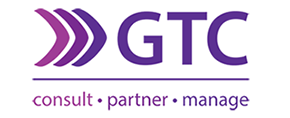Strategic & Tactical Asset Allocation – 4th Quarter December 2020
GTC, where relevant to the Fund’s mandate, use a combination of Strategic Asset Allocation (i.e. investing across asset classes in a fixed ratio over long periods of time) and Tactical Asset Allocation (considered and measured changes to asset allocation within predefined limits). The GTC Asset Allocation Committee undertakes a quarterly asset allocation review and meets more frequently depending on market dynamics.
The Rand – 4th Quarter December 2020
The rand continued to strengthen over the quarter as an increase in risk capital on the back of an uptick in investor sentiment was experienced. This rand gain (or dollar weakness?) can be seen by the sharp downturn in the blue line (exchange rate) bringing it close to its long-term trend as indicated by the orange line. Given the uncertain economic environment that South Africa finds itself in, it is likely that the currency exchange rate will remain volatile.
STeFI – 4th Quarter December 2020
The STeFI (Alexander Forbes Short Term Fixed Interest Index) is a recognised benchmark of the returns earned in the South African money market. The money market consists of cash-like investments with a maturity of under one year. Examples of these instruments include, Call Deposits, Negotiable Certificates of Deposit (NCD), Treasury Bills & Bridging Bonds.
Global & Local Bonds – 4th Quarter December 2020
Local bond market and interest rates The Reserve Bank’s monetary policy committee kept the interest rate unchanged at 3.5% at their final meeting of 2020 even as it revised down its forecast for growth. While underlying economic conditions are easing, South Africa’s recovery remains challenging. Even though inflation is under control at 3.3%, a clear and strong shift to growth is still lacking, requiring more than historically low interest rates. A key consideration remains how to balance growth at sustainable debt levels. The local bond market delivered 6.71% over the quarter, well in excess of cash which achieved 0.97%.
Stimulatory Measures – 4th Quarter December 2020
Stimulatory measures are typically used by governments and central banks as a package of economic measures put together to stimulate a stagnating economy with the objective being to reinvigorate the economy and prevent (or reverse) a recession by “stimulating” employment and spending. 2020 will certainly be remembered as a year of almost unprecedented economic uncertainty and stock market volatility. Governments and central banks have remained firm in their support to dealing with the economic crisis and have introduced record breaking stimulatory measures to assist in economic recovery, though complete recovery to pre-Covid-19 levels will likely be protracted.
Emerging Markets – 4th Quarter December 2020
Emerging markets were the star performers for the quarter with US dollar weakness compounding gains. In dollar terms, the MSCI Emerging Market Index delivered 19.7% over the quarter, its strongest performance in over a decade which also saw it outperform the MSCI Developed World Index. An improvement to investor risk appetite due to successful vaccine news, and the rally in commodity prices contributed significantly to emerging market’s collective performance. As with developed markets, emerging markets have seen a resurgence of new Covid-19 cases, in part attributed to new strains of the virus. This has added additional pressure to the already overwhelmed health care and financial sectors of emerging markets. Market volatility remains elevated as participants search for signs of a recovery to pre-Covid-19 levels.
Global Markets – 4th Quarter December 2020
Geo-political and economic developments over 2020 have been unprecedented in terms of their scale and magnitude. No one could have foreseen or predicted the course of events that unfolded, with growth in almost the entire global economy being brought to a sudden halt as many countries went into total Covid-19 avoiding lockdown measures. While markets have recovered considerably since their March lows, continued elevated levels of volatility are likely to persist. The fourth quarter of 2020 saw a substantial up-tick in investor sentiment and increased risk appetite which put the US dollar under significant pressure. This relative dollar weakness is so far persisting. Developed markets gained over the quarter in dollar terms, with November’s performance notably strong due to the vaccine news. Overall, Joe Biden’s win in the US presidential election, the $900 billion stimulus package, and successful vaccine developments,... Read More
The ONE Minute Brief – 29 January 2021
The GTC ONE Minute Brief covers the following topics: Economic and Political News Major South Africa Corporate News Major Global Economic News Technical Snapshot Download the full GTC ONE Minute Brief.





